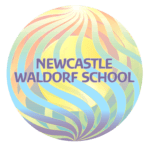
Designer and consultant for the D&t mural
Isaac is recognised by Wonnarua Country and proudly identifies with the Wonnarua language group.
In 2020, Isaac Osland graduated from Muloobinba Waldorf Minamba (Newcastle
Waldorf School). Upon completing his HSC exams, Isaac and his fellow Class 12 students were tasked with creating a mural for the Design & Technology building. Due to his strong connections to Aboriginal culture, Isaac was selected as the designer for the artwork and served as a consultant for all imagery. The mural was painted by Isaac and his classmates Elsa Vial, Channing Price, and Alethea Graham.
This is the story behind the mural that Isaac has gifted to the school:
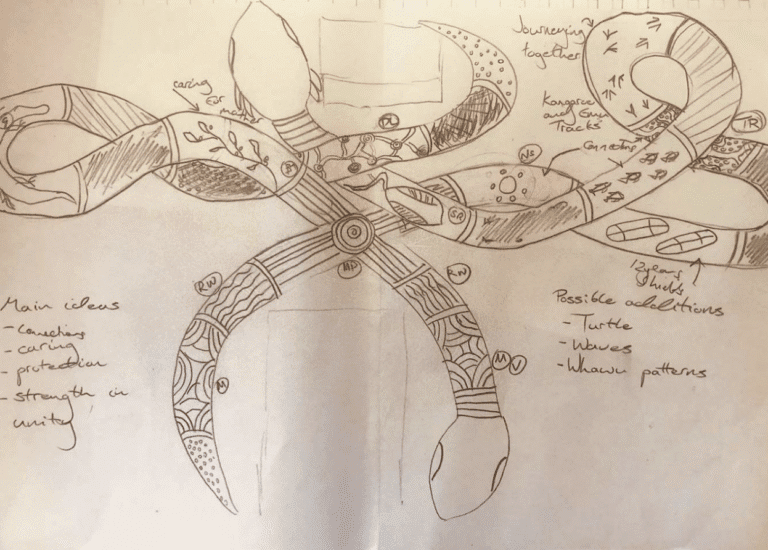
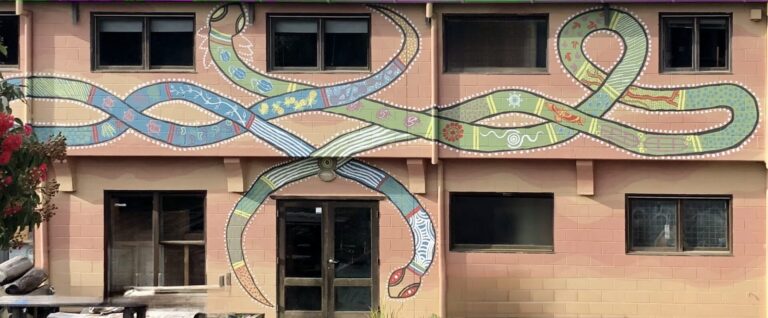
Each aspect of the Mural tells either one or multiple aspects of the school and its connection and respect for the Awabakal people and their history. The main theme behind this mural is strength through unity and honouring the traditional people of Australia; the two snakes of the mural represent this since they are often seen as a symbol of strength, creativity and continuity across many Aboriginal Language groups, featuring strongly in the Creation Stories of the Dreaming.
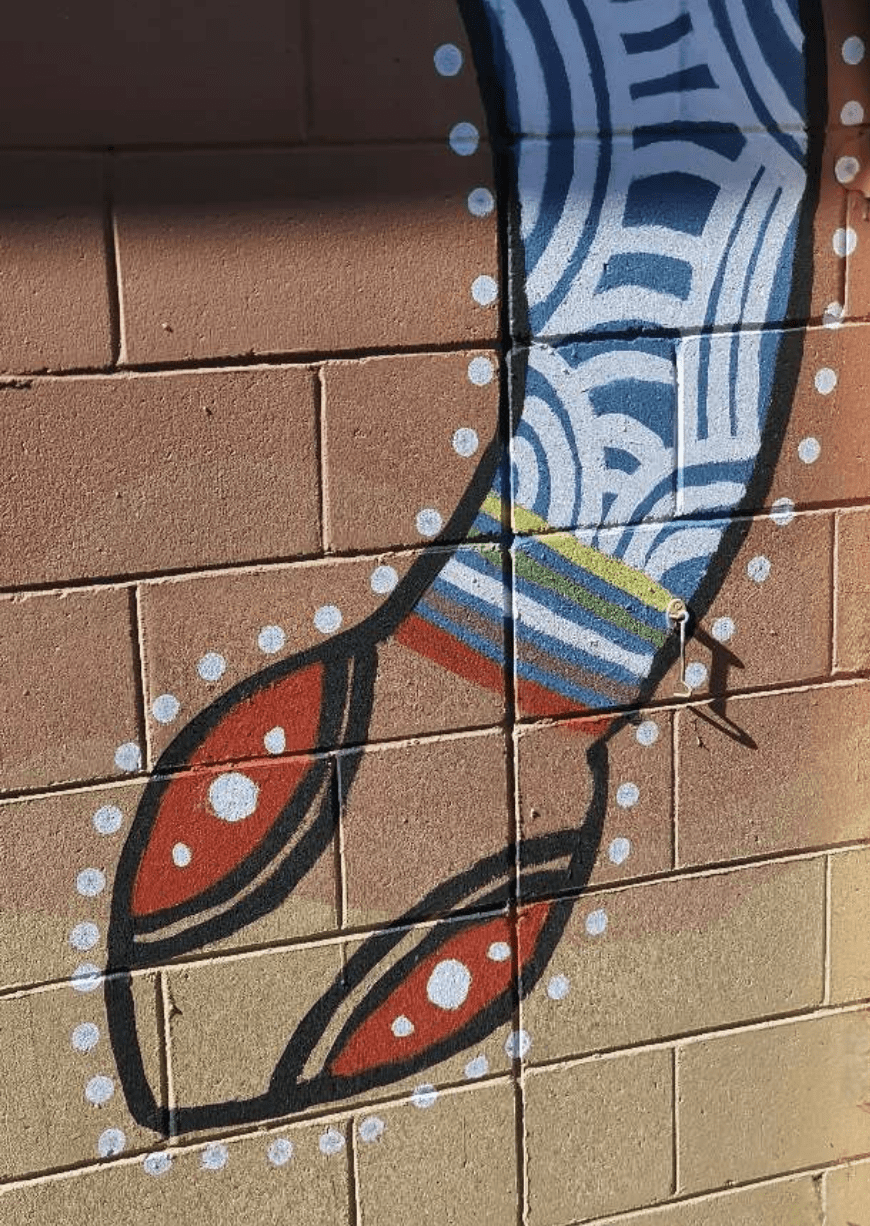
Mountain Ranges: The symbol of the mountain range represents the land which the school is built upon as well as acknowledging that it once belonged to the Awabakal people.
Running Water: The name 'Awabakal' means people of the ‘plain or flat surface’, believed to refer to the surface of Lake Macquarie, which is part of the Awabakal people’s territory that takes up the Mid-North Coast region of New South Wales.
Bush Tucker: This symbol generally refers to the many species of bush berries gathered by Aboriginal people for food. In this case it is to represent the Bush Tucker garden that the school has created with the aid of Jarn. This garden represents the school’s ideology of protecting nature, just like the Aboriginal people cared for the natural world, which is referred to as Mother in many Aboriginal language groups.
Rain: In Aboriginal communities, rain is celebrated by many. Aboriginal people in Central Australia would celebrate rain by performing various songs and dance cycles during ceremonies. In the context of the school, it is another representation of our respect towards Australia’s Indigenous peoples.
Goanna: The Goanna is a totemic spirit across Australia but holds particular cultural significance to the Nungurrayi and Napaltjarri Aboriginal Women and the Jungarrayi and Japaltjarri men and is often painted as a sign of respect to their ancestors. The Goanna is also seen as a symbol of strength among the Aboriginal people once again highlighting the school’s theme of strength through unity and respect towards the Aboriginal people.
Sea Turtles: The Sea Turtle is another totemic animal, which represents longevity and calmness. In relation to the mural, it’s meant to represent that students can be calm and feel welcomed into this new environment.
People Dancing: Dancing is an important aspect of Aboriginal culture and is used to tell stories about the land, animals and the Dreamtime. Dance has been passed down through many generations in order to retain this sacred knowledge, and it remains as such today. We believed that adding this to the Mural would highlight the importance of Aboriginal culture in the modern world, since there is so much to learn from it. The symbols used in this section don’t mean “people dancing” on their own. The symbol means person and how they are arranged mimics of that dancing.
Star: Aboriginal people have always used the stars for navigation as well as a calendar to determine the seasons for hunting and gathering specific foods. Aboriginal astronomy also provided specific constellations and star motions with spiritual and moral meanings; some of these stories include “The Emu in the Sky” and “The Seven Sisters”. In terms of the school, this symbol represents the school’s study of astronomy and the stories that relate to them.
Campfire: This symbol also has a different meaning and look depending on the artist’s connections and context. I personally use this symbol to represent ‘journey paths’ from ‘campfire’ to ‘campfire,’ and to express stories of travel, growth, and learning.
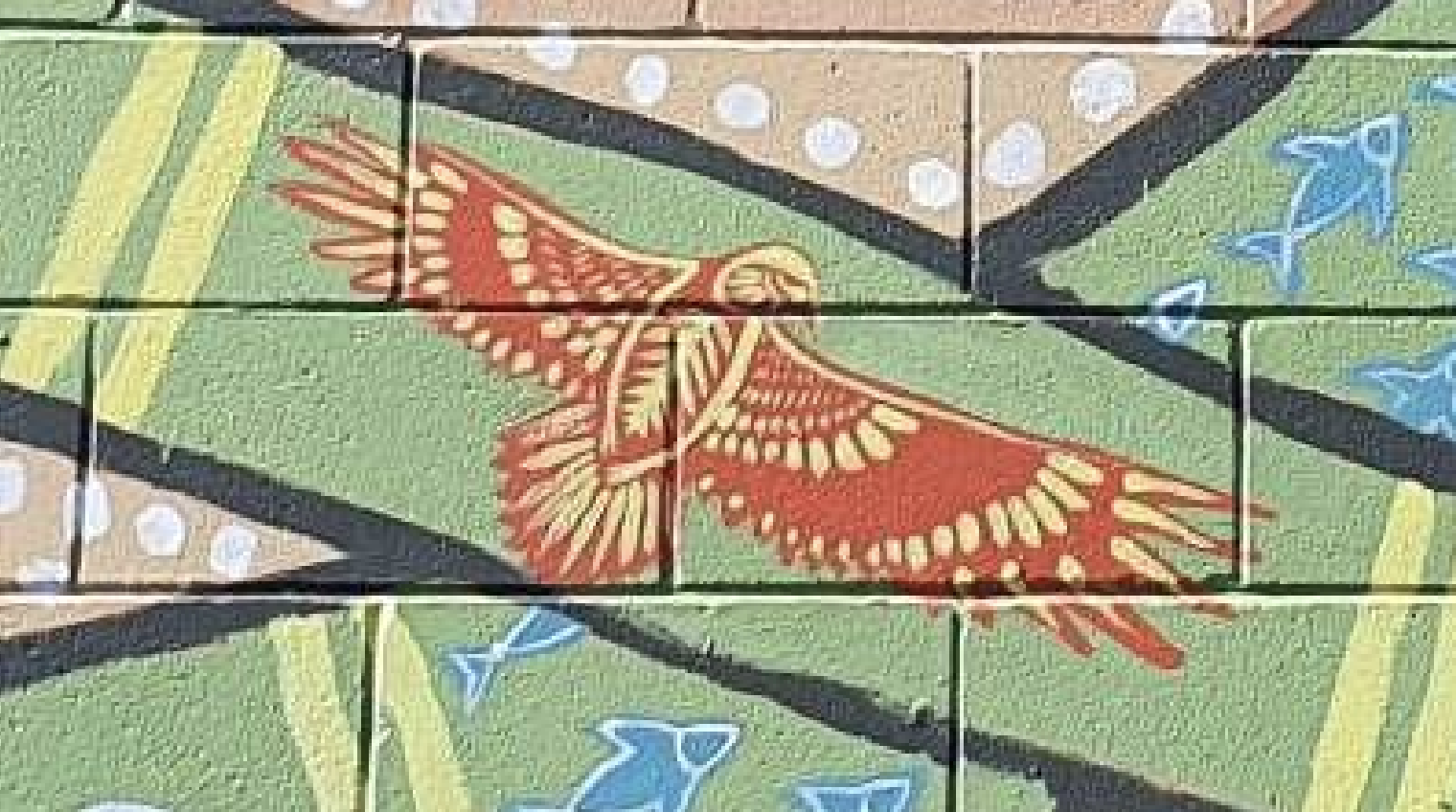
Sea Eagle: The Sea Eagle is another totemic spirit strongly associated with the Awabakal people, it is also considered a symbol of strength and knowledge. This symbol once again relates to the overarching theme of strength through unity.
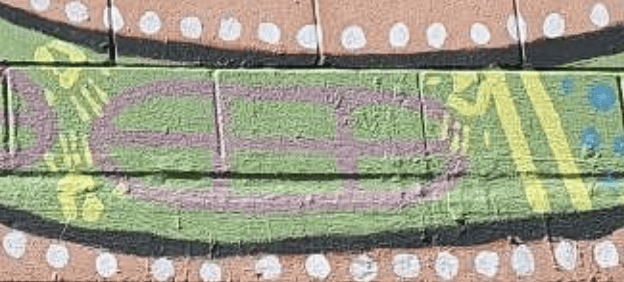
Shields + Hands: The shield is a symbol of protection and represents the staff of multiple classes at the school, from Kindergarten all the way to Year 12, looking after one another.
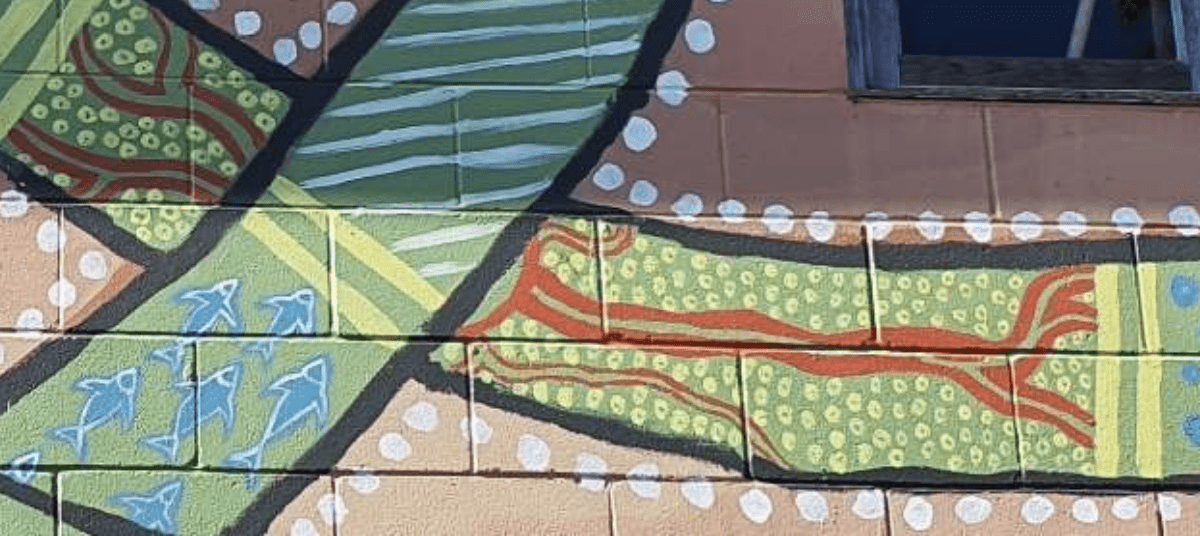
Tree Roots: The tree roots are a representation of the connectedness between us all and the connection we share with Mother (Earth). It is also a symbol of being grounded. This is representative of our school by showing that at this school, students can expect to form connections with others and discover a sense of being supported or grounded.
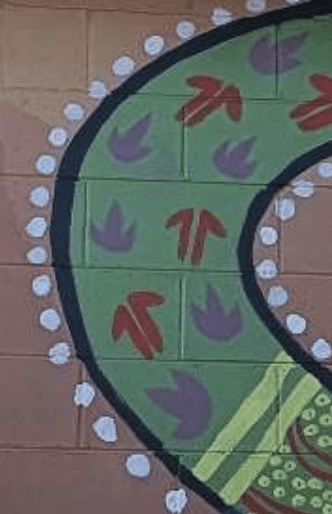
Kangaroo and Emu Tracks: Both the Kangaroo and Emu are totemic animals, the Kangaroo is generally considered a male totem while the Emu is considered a female totem. In the context of the mural, the tracks represent the various students supporting each other during the journey that is school.
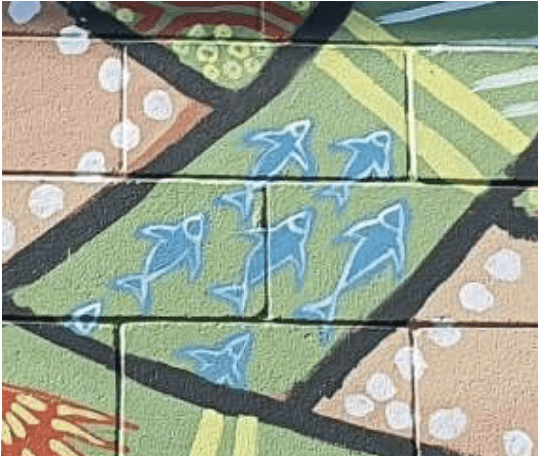
Fish: Fish are an important part of Aboriginal culture, acting as a major food source. But in this instance, the symbol represents the students working together to help further each other along with their studies, just as a school of fish swim together to help each other survive.
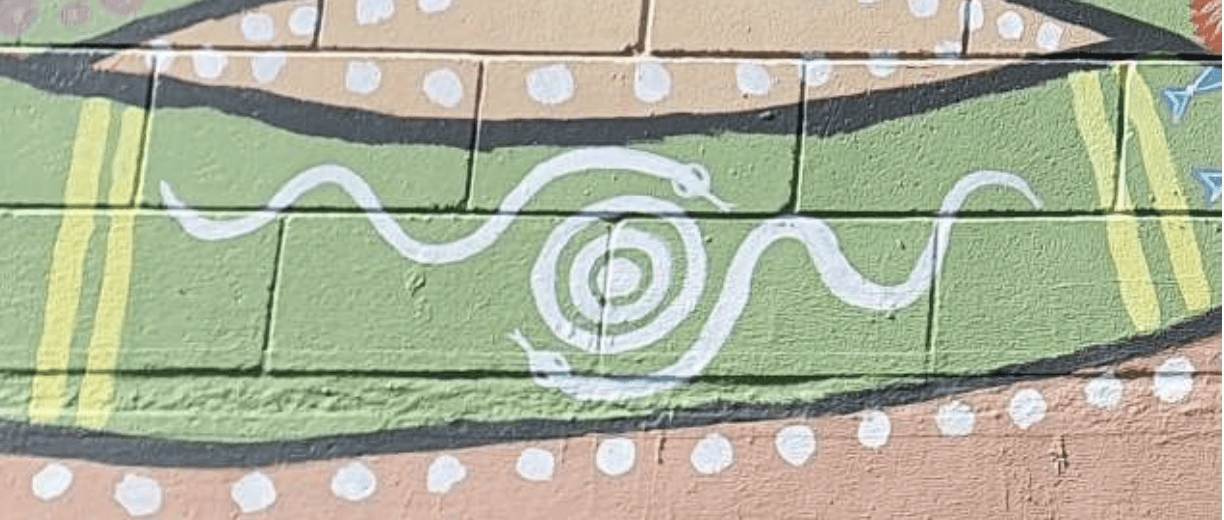
Snakes and a Meeting Place: As mentioned previously, snakes are a symbol of strength, creativity and continuity while the Meeting place symbol is a place of cultural significance. This symbol is not typically found in traditional Aboriginal art, this symbol was improvised by the creative team behind the Mural and represents meeting at school to share your creativity while being supported by both students and staff over the years of attendance.

Kangaroo and Emu Tracks: Both the Kangaroo and Emu are totemic animals, the Kangaroo is generally considered a male totem while the Emu is considered a female totem. In the context of the mural, the tracks represent the various students supporting each other during the journey that is school.

Meeting place:The meeting place symbol typically refers to a culturally significant site where Aboriginal men and women meet, gather around and sit in a circle. In this context however, it represents that the school itself is a meeting place where students come learn and interact with one another and is a significant place for them.
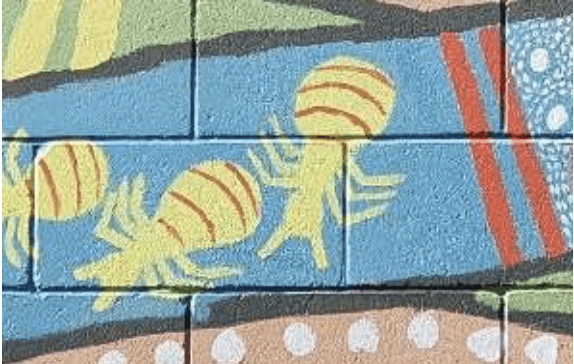
Honey Ants : Honey Ants are a significant bush tucker among Aboriginal people and are considered “Gifts from Mother” as well as special treats by many Aboriginal people. This is meant to once again represent the school’s bush tucker garden.
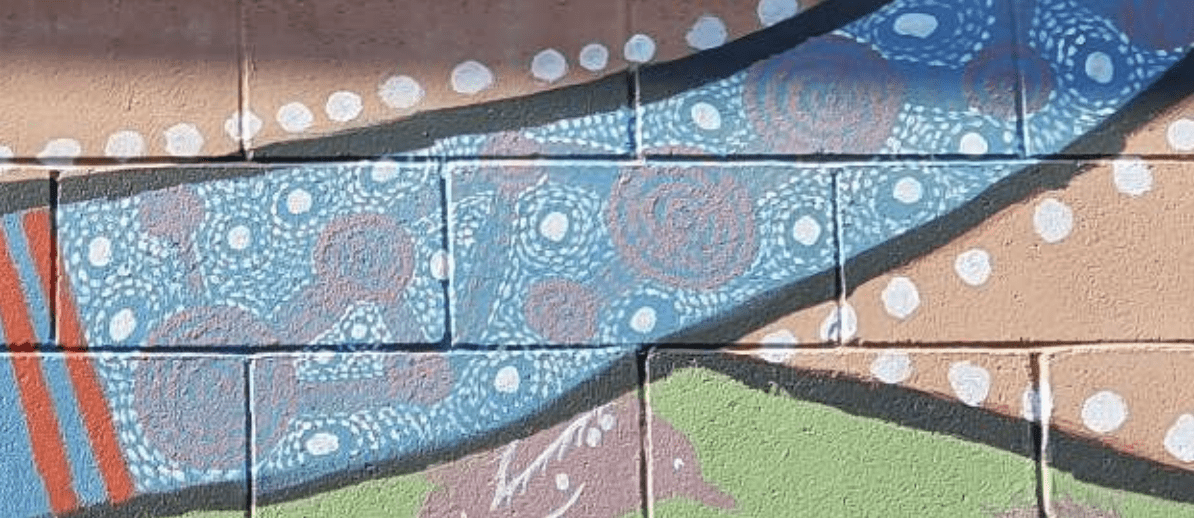
Dreaming Lines Dreaming Lines, otherwise known as Songlines, serve a variety of functions within Aboriginal society. One of the most wellknown uses of the Dreaming Lines is that they are a means of navigating the land. This was achieved by singing certain traditional songs in a specific sequence which allowed them to travel long distances without getting lost, regardless of the terrain or weather. Since numerous landmarks are contained within the Dreaming Lines which allowed them to be used as oral maps. In the case of our mural, the Dreaming Limes represent the journey students will take during their schooling years as well as the respect for the stories of the Aboriginal people.
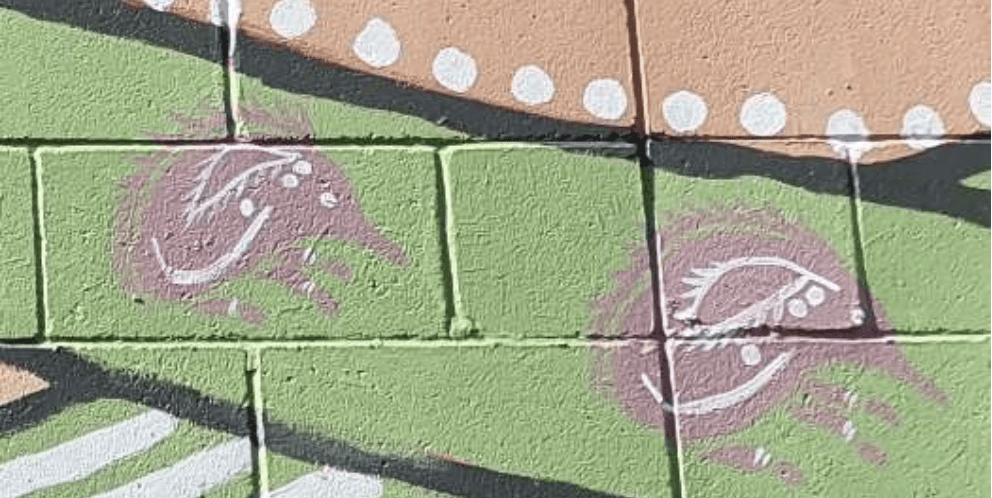
Echidnas: The echidna is another totemic animal that is often associated with female due to its ability to lay eggs, a symbol of fertility. The Echidna Dreaming also represents protection, life and unity. The reason behind adding this symbol is due to it representing unity, one of the themes we wanted to express in this mural.
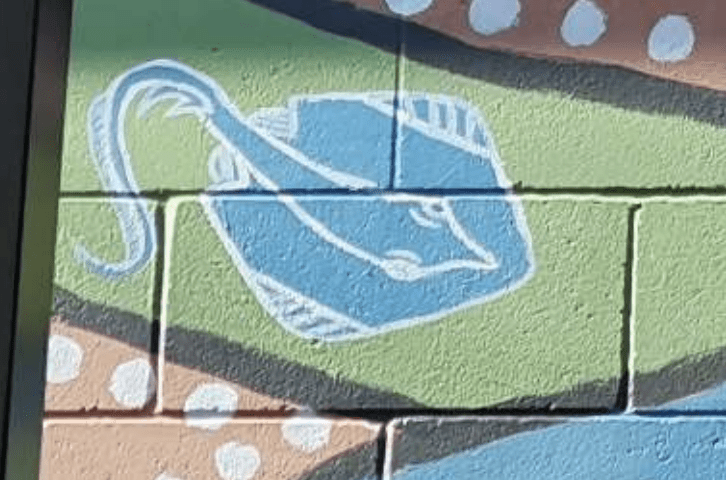
Stringrays:The stingray is another Awabakal Totem, due to their strong connection to the water as well as being a symbol of manoeuvrability, harmony and sensitivity. At this school you will learn that life has many pathways with each one having a different outcome and you will need to manoeuvre the many twists and turns that await you as well as being able to create a sense of harmony between your school life, and your out-of-school life.
